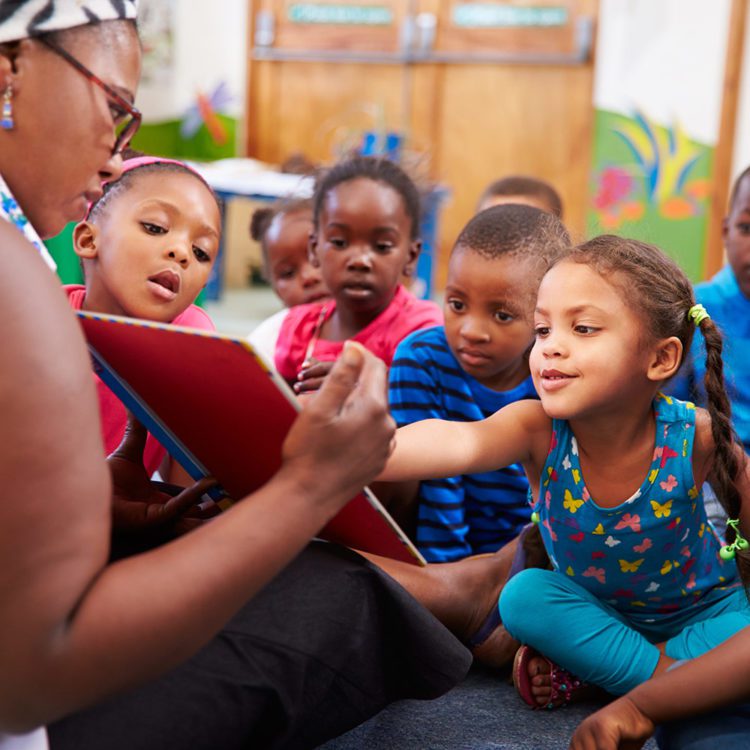Overview
Preschool children learn through play (Toub, Rajan, Golinkoff, & Hirsh-Pasek, 2016; Weisberg, Hirsh-Pasek, & Golinkoff, 2015). Playful learning is an umbrella term that includes both free play, which is totally child-directed, and guided play, in which adults scaffold children’s interests and learning. Our research has shown that guided play has a multitude of benefits on early learning, particularly language learning and spatial skill development. We are continuing to explore the impacts of guided play with new forms of electronic media and in new settings such as children’s museums.
Guided Play
Guided Play Benefits Learning
Guided play advances cognitive skills like language (Golinkoff, Hirsh-Pasek, Russ & Lillard, 2013; Zosh, Hirsh-Pasek, & Golinkoff, 2015) and reading, as well as social skills like emotion regulation (Singer, Golinkoff, & Hirsh-Pasek, 2006). Despite evidence linking play to development (Golinkoff, Hirsh-Pasek, & Singer, 2006) parents, educators and policy-makers worry that playtime takes children away from precious academic activities. Playtime has dropped precipitously from 40% in 1981 to 25% in 1997. In the last two decades, children have lost 8 hours of free play per week.
Research in our laboratory is trying to better understand the link between play and learning by looking not only at free play, but also at guided play (Weisberg, Hirsh-Pasek, & Golinkoff, 2013; Toub, Rajan, Golinkoff, & Hirsh-Pasek, in press). In guided play, children take the lead, but adults support their exploration through props and by interacting in ways that scaffold interest and learning. Our work in this area suggests that children need more time both for free play and for guided play and that guided play might offer a promising new pedagogy that helps children thrive academically. Our books Einstein Never Used Flashcards (Rodale), A Mandate for Playful Learning (Oxford University Press), and Becoming Brilliant: What Science Tells us about Raising Successful Children (APA Press), make this case as do several articles showing the promise of spatial and math play (Fisher, Hirsh-Pasek, Golinkoff, Singer, & Berk, 2011), playing learning in reading (Dickinson, Golinkoff, & Hirsh-Pasek, 2010) and playful learning through the arts (Reed, Hirsh-Pasek, & Golinkoff, 2012).
Play & Language
Language is the currency of social interaction and school achievement, and language thrives when children are interacting with adults and peers in a playful manner (Zosh, Reed, Golinkoff, & Hirsh-Pasek, 2014), suggesting that play can make important contributions to the learning of language. Guided play provides a particularly effective language-learning environment; guided play offers a socially rich and meaningful context for learning rather than a didactic environment that is not engaging or responsive (Weisberg, Hirsh-Pasek, Golinkoff, Kittredge, & Klahr, in press).
Play & “Educational” Apps
Children are in the midst of a vast, unplanned experiment, surrounded by digital technologies that were not available but 10 years ago. At the apex of this boom is the introduction of applications (“apps”) for tablets and smartphones. However, there is simply not the time, money, or resources available to evaluate each app as it enters the market. Thus, “educational” apps are largely unregulated and untested. Apps designed to promote active, engaged, meaningful, and socially interactive learning—four “pillars” of learning—within the context of a supported learning goal are considered educational. Our lab just completed a review of how playful learning could be applied in the area of educational apps (Hirsh-Pasek, Zosh, Golinkoff, Gray, Kaufman, & Robb, 2015), and we are working hard to better understand the mechanisms that support playful learning within and beyond apps.
Playful Learning in Children’s Museums
We have been partnering with local children’s museums to work with children and families attending museums for participation in quick, fun research studies. This partnership also allows museum staff to reap the benefits of professional development through working with researchers and accessing ongoing science directly. Museums inspire playful learning, and the challenge faced by researchers and partner museums is to augment the wonderful museum exhibit designs to make the guided play occurring at museums a rich experience in which the learning is visible (Hirsh-Pasek & Golinkoff, 2016). The more apparent the links between playful learning and outcomes for children, the more parents will come to understand that museums are both fun and fuel for learning. Today, the missions of researchers and museum educators can be jointly achieved by understanding that playful environments are learning environments. Museums are houses for playful learning and, thus, are outstanding natural laboratories that are fun and educational for families.





